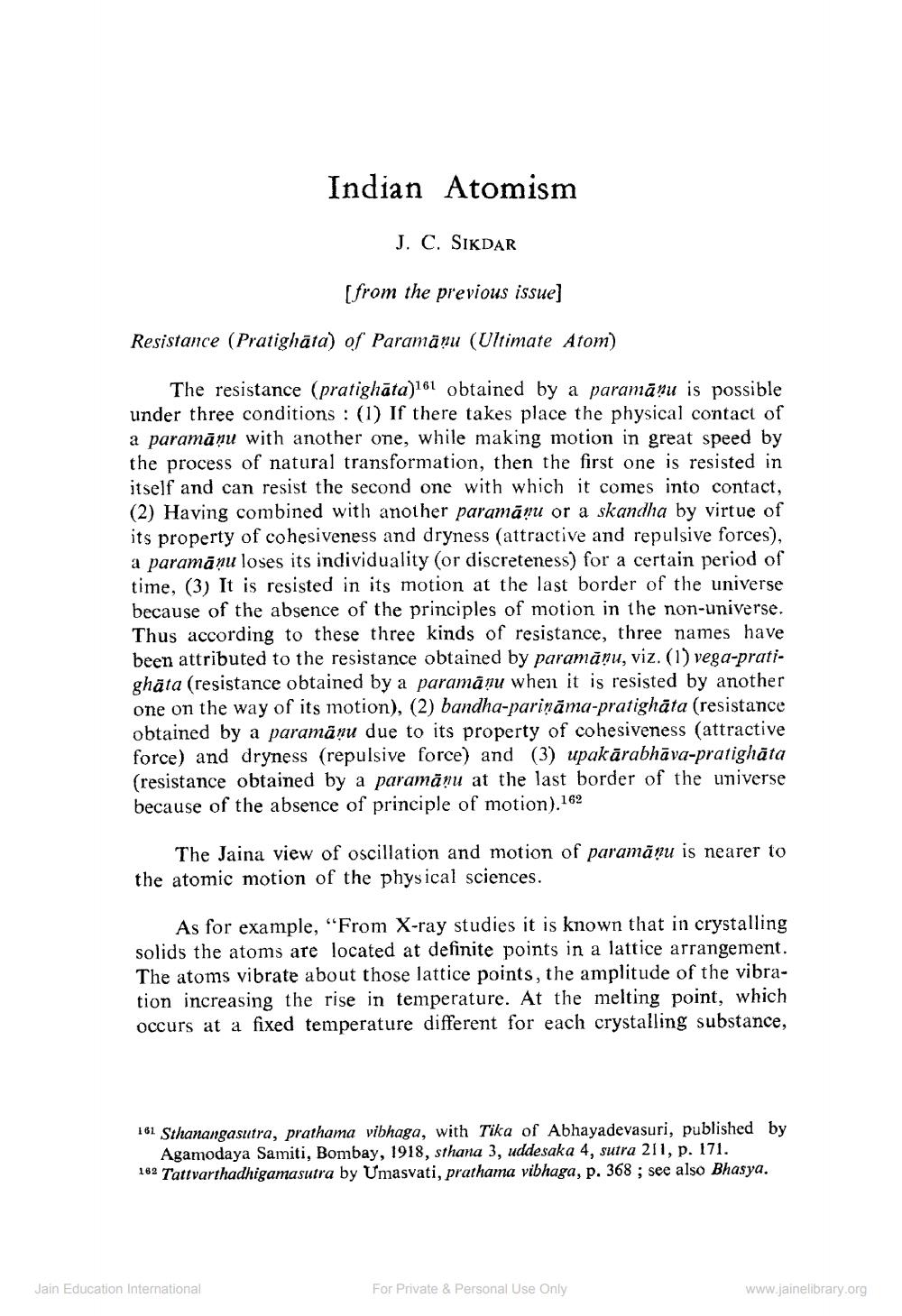________________
Indian Atomism
J. C. SIKDAR
(from the previous issue]
Resistance (Pratighāta) of Paramānu (Ultimate Atom)
The resistance (pratighāta)161 obtained by a paramānu is possible under three conditions : (1) If there takes place the physical contact of a paramāņu with another one, while making motion in great speed by the process of natural transformation, then the first one is resisted in itself and can resist the second one with which it comes into contact, (2) Having combined with another paramāņu or a skandha by virtue of its property of cohesiveness and dryness (attractive and repulsive forces), a paramāņu loses its individuality (or discreteness) for a certain period of time, (3) It is resisted in its motion at the last border of the universe because of the absence of the principles of motion in the non-universe. Thus according to these three kinds of resistance, three names have been attributed to the resistance obtained by paramănu, viz. (1) vega-pratighāta (resistance obtained by a paramāņu when it is resisted by another one on the way of its motion), (2) bandha-pariņāma-pratighāta (resistance obtained by a paramāņu due to its property of cohesiveness (attractive force) and dryness (repulsive force) and (3) upakārabhāva-pratighāta (resistance obtained by a paramānu at the last border of the universe because of the absence of principle of motion).162
The Jaina view of oscillation and motion of paramānu is nearer to the atomic motion of the physical sciences.
As for example, "From X-ray studies it is known that in crystalling solids the atoms are located at definite points in a lattice arrangement. The atoms vibrate about those lattice points, the amplitude of the vibration increasing the rise in temperature. At the melting point, which occurs at a fixed temperature different for each crystalling substance,
161 Sthanangasutra, prathama vibhaga, with Tika of Abhayadevasuri, published by
Agamodaya Samiti, Bombay, 1918, sthana 3, uddesaka 4, sutra 211, p. 171. 162 Tattvarthadhigamasutra by Umasvati, prathama vibhaga, p. 368; see also Bhasya.
Jain Education International
For Private & Personal Use Only
www.jainelibrary.org




